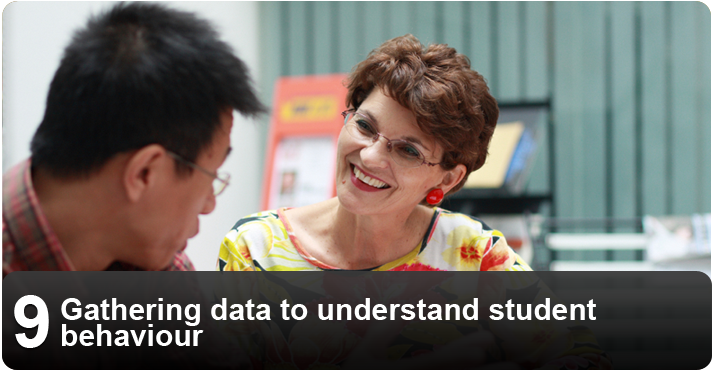“Always assume that a motivation for a particular behaviour is positive
but expressed in a negative way.”
– Richard L. Curwin and Allen N. Mendler,
Discipline
with Dignity
To effectively support students, school staff must understand the reasons
why students behave as they do. This understanding helps them devise plans
to support students as they develop new and more positive behaviours.
In many instances, students engage in negative behaviour to obtain something
they want or to avoid something they don’t want. Each behaviour serves a function,
but the functions are different for different students. For example, one student
may hit others in order to be left alone, another student hits to get possession
of an object (such as a soccer ball) or to gain power, and a third student
hits to get attention.
Collecting data about the functions of problem behaviours and the frequency
of these behaviours provides classroom teachers with the information they need
to:
- decide which behaviour supports and strategies will be most effective in
their classroom
- measure the success of the supports they choose.
A common method of identifying the functions of behaviour is ABC Recording.
A for Antecedent
Record anything that came before the identified behaviour.
- Who was involved in the situation? For example, “The
teacher asked Bill to do the work,” “Another student (Sally)
stood in front of Bill in the line,” “The teacher stepped out
of the room just before Bill stood up on his desk and yelled.”
- What happened just before the challenging behaviour?
This can include:
- tasks, such as having to stand in line, participate in a
group activity, do a specific worksheet, write a test
- consequences and reactions to other behaviours, such as receiving
additional attention or a reprimand
- social interactions, such as playing an active game, talking
with another person or being involved in a conflict with another student
- transitions, such as changing from one task to another or
dealing with changes in the regular routine
- home and community-related factors, such as changes in the
family dynamics (e.g., death, divorce, a new person living in the home,
a sibling leaving home), conflict within the family or changes in extracurricular
activities (e.g., no longer being able to use the computer or being cut
from the community soccer team)
- health factors, such as illness or effects of medication.
- When did the behaviour occur? Include the time
and date.
- Where did the behaviour occur and what was the
environment like? For example, the student was at circle; in his or her seat;
in the hall, bathroom, gym or outside. What was the noise level, activity,
structure, proximity to others?
B for Behaviour
Record the specific behaviour that occurred in a way that provides accurate
and useful information. Include the student’s words and actions. Use
specific descriptions. Instead of saying the student was “emotional,” report
specific actions such as crying or screaming. Instead of saying a student was “verbally
or physically aggressive,” report in detail what was said or done.
Report on the intensity and duration of the behaviour. For example, “Sally
screamed very loudly (8 on a scale from 1 to 10) for 12 minutes,” “Bill
hit Sam so hard that he left a bruise.”
C for Consequences
Describe the consequences (what happened to the student following the negative
behaviour).
Consequences provided by school staff can include attention, praise and tangible
rewards, or reprimands, saying no, requiring the student to repeat the task
or sending the student for timeout. Record as well cases where there were no
consequences; that is, school staff said or did nothing in response to the
behaviour.
Consequences can also include what others said or did. For example, another
student may have moved out of the way, given the student the object he or she
was asking for or yelled at the student. It is useful to know about the emotional
reactions of other students and adults in the area; for example, laughter,
crying or showing fear.
Another type of consequence has to do with tasks and activities. For example, “The
student avoided doing the activity requested of him or her, got to choose to
do another activity or was required to do a specific task.”
After you have collected and analyzed all the data, choose a specific behaviour
to focus on and make it into a goal. This goal identifies the target that will
be accepted as evidence of success. Then create an action plan that states:
- three or more steps toward achieving the goal
- the resources required, including people, time and material items such
as reinforcers
- checkpoints for monitoring progress.
Explain the plan to students and their parents and, if possible, engage students
by asking them to help plan how the goal can be achieved.
As the individual goal-setting plan is being implemented, monitor frequently
to determine the effectiveness of the intervention and identify opportunities
to celebrate successes. For example, if a class goal is to increase the number
of students arriving on time, remind students by drawing a clock with the start
time on the board. Keep records of arrival times and celebrate when the goal
is reached. As students internalize the behaviour, increase the time lines
from a day to a week to a month, with corresponding celebrations.
If the goal is not reached, discuss the reasons why.


